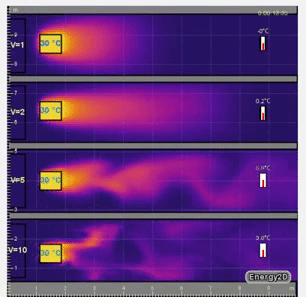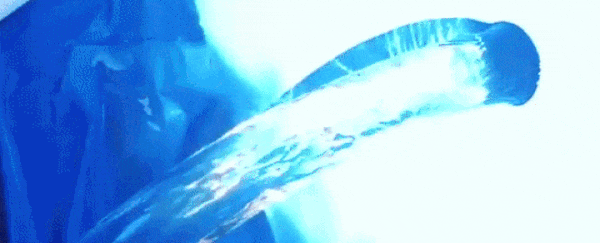Since it appeared on the Oddly Satisfying subreddit last week, a gif of a strange-looking water stream has sent the internet into overdrive, trying to figure out what's actually going on here.
As you can see in the gif below, at first glance, the stream looks so smooth and still, you'd be forgiven for assuming it had been frozen in place. It's only when someone's finger gets in there and disturbs the flow that you realise there's nothing frozen about it.
Here's the gif, from redditor Namaqq:
As great as it would be to say it's magic and move on, the physics behind this strange phenomenon is actually incredibly cool.
The best bet to explain the behaviour of the water here is something called laminar flow - an aspect of fluid dynamics that describes when a fluid flows in parallel layers, with no disruption between them.
Named after laminae, which are thin layers or plates, a laminar flow occurs when the flow channel is relatively small, the fluid is moving relatively slowly, and its viscosity is relatively high - which for water can increase with pressure.
This suggests that in the gif above, which shows water being gently let out of an inflatable pool, the velocity, pressure, and certain other flow properties at each point in the stream are maintaining a perfectly constant value.
That's until someone puts their finger in it.
Laminar flow is the complete opposite of another phenomenon, known as turbulent flow, which is a far more common behaviour that can be seen in blood running through arteries, lava flow, and atmospheric and ocean currents.
Here's a demonstration of the difference, with laminar flow at the top, and turbulent flow down the bottom:
 energy2d/YouTube
energy2d/YouTube
As you can see above, while the top two flows appear to be incredibly stable and uniform - so much so that it'd be impossible to tell that they were even moving forward without the help of the colours - turbulent flow undergoes constant and irregular fluctuations.
You can see in the bottom two examples that the speed of the flow is undergoing constant changes both in magnitude and direction, while its overall bulk continues to maintain one specific direction. Which is what the flow of air above Earth's surface looks like when you visualise it:
So there you have it - not frozen, not witchcraft, just good, old-fashioned fluid dynamics.
If you're still curious, the video below by SciShow explains how flying would not be the same without strange little angled bits of metal on the edges of the wings called winglets, that are built specifically to take advantage of the same kind of laminar flow as seen in the water stream gif:

